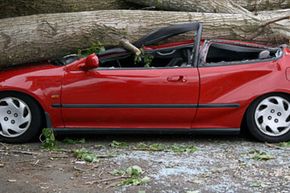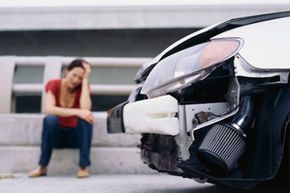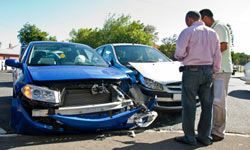Just like cars themselves, car insurance comes in all shapes and sizes. And it's a good thing, too -- in the U.S., it's required by law in 47 states, so you might as well have options. But what do those options cover: the car or the person? Well, both. In this article, we'll explore exactly which kinds of auto insurance apply to what.
Auto insurance is sold in packages consisting of different types of coverage. Some apply to your car, such as comprehensive coverage, which includes coverage for non-accident–related damages ranging from theft to natural disasters to vandalism [source: Kiplinger]. That means if your brother's car breaks down and you let him take yours to work, your car is still covered -- even though you're not driving it. In this case, your brother -- or anyone else you give permission to drive your car -- is called a permissive driver [source: Auto Insurance Remedy].
Advertisement
But let's say you're driving along, and a street sign jumps out in front of your car. There's a huge crack in your windshield, and the sign sure doesn't have insurance. Is it up to you to pay for the damages? Not if you have collision coverage. If you get into an accident and there's a question as to who's at fault, collision coverage will pay for your damages no matter what [source: Kiplinger]. And, of course, this comes in handy when an inanimate object is involved. Like comprehensive policies, collision insurance covers your car as long as a permissive driver is operating it [source: Auto Insurance Remedy].
On the next page, we'll look at the other piece of the auto insurance puzzle -- the types of insurance that cover the driver, not the car.
Advertisement




